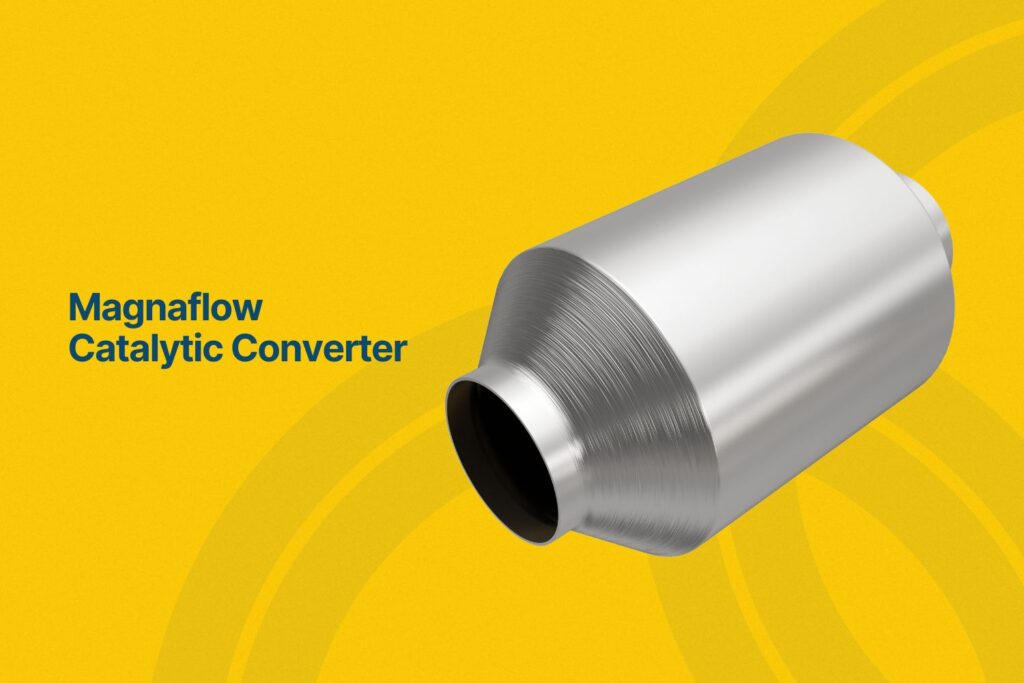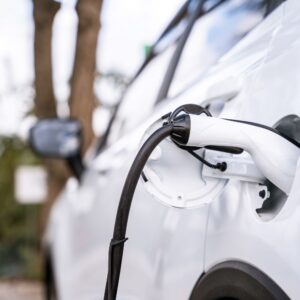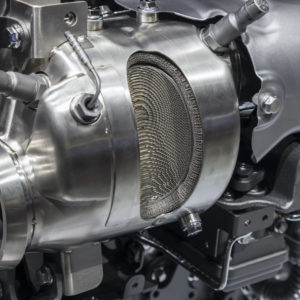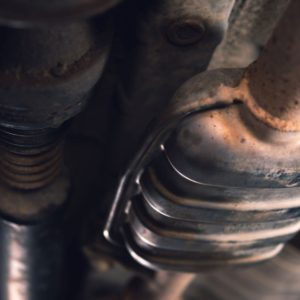Is your vehicle’s catalytic converter acting up? A crucial part of the emissions control system, the catalytic converter breaks down unburned fuel and toxic substances in the exhaust gases from the engine. If the converter develops an issue and stops working correctly, your vehicle might illuminate its check engine light and set a catalytic converter efficiency trouble code. In the worst-case scenario, your car or truck might fail its next emissions test, leading to fines and other legal problems.
You need to get a replacement catalytic converter and install it in your vehicle before returning to the road. There are many products on the market. Fortunately, we can recommend catalytic converters with the excellent performance and reliability you deserve.
Types of Catalytic Converters
There are several different types of catalytic converters. Whether you need to replace a faulty converter or want to upgrade to a high-performance part, you must select one that’s the same type. An otherwise excellent catalytic converter might not fit under your vehicle or prove incompatible with the attachment points.
By Fit

Direct-Fit Catalytic Converter
Direct-fit catalytic converters bolt directly into the exhaust line. They’re relatively easy to replace and install in your vehicle.
Our Top Picks For Direct-Fit Catalytic Converters
- JC Whitney JF960330 Driver Side Direct Replacement Series Catalytic Converter
- Magnaflow 5582941 Front California Series Catalytic Converter
- Davico 19051 Front Exact Fit Series Catalytic Converter
- Catco 774369 Front, Passenger Side Catalytic Converter
- AP Exhaust 641565 Front Catalytic Converter
Manifold Catalytic Converter
Manifold converters get their name from the way they bolt onto the exhaust manifold. They take exhaust gases from several cylinders and direct them into a single exhaust pipe.
Manifold converters are designed for use in certain vehicle models. You cannot install them in other models that aren’t compatible. Also, they generally cost more than direct-fit and universal catalytic converters. And because manifold converters are built into the exhaust manifold, you must replace the entire manifold if it fails.
Our Top Picks For Manifold Converters
- JC Whitney JC960334 Front Catalytic Converter
- Magnaflow 5531028 California Series Catalytic Converter
- Dorman 674-965 Front OE Solutions Series Catalytic Converter
- AP Exhaust 641499 Front Catalytic Converter
- Eastern 30584 Catalytic Converter
Front Manifold Converter and Rear Catalytic Converter Kit
This type has two different catalytic converters. It has a manifold converter up front and a catalytic converter in the back. Together, the two parts deal with NOx and other pollutants in exhaust gas.
Our Top Picks For Front and Rear Catalytic Converter Kits
- JC Whitney SET-JN960335SS-2 Front and Rear Catalytic Converters
- JC Whitney SET-JT960310-2 Front and Rear Catalytic Converters
- Evan Fischer SET-REPN960335SS-2 Front and Rear Catalytic Converters
- Evan Fischer SET-REPT960310-2 Front and Rear Catalytic Converters
- Evan Fischer SET-REPN960339-2 Front and Rear Catalytic Converters
Universal Catalytic Converter
Universal catalytic converters are physically compatible with most vehicles. As long as the diameters of the converter’s inlet and outlet tubes match their counterparts on the exhaust system, the part can bolt onto your car or truck with no risk of leaks caused by a loose connection.
Some universal catalytic converters might need additional work during installation. Check the product packaging or the manual to see if the cat con needs cutting, welding, or other work.
You also must ensure that the catalytic converter meets the legal requirements and emission standards of the state where you will register your vehicle. Otherwise, you cannot legally drive it.
In California, matching up a catalytic converter requires more than knowing its size and shape. The cat must have the approval of the California Air Resources Board (CARB). Furthermore, the cat’s CARB number must match up with the one listed for that car or truck.
Our Top Picks For Universal Catalytic Converters
- Eastern 92736 Catalytic Converter
- Eastern 92466 Rear Catalytic Converter
- Eastern 92465 Catalytic Converter
- Eastern 92735 Catalytic Converter
In California, the catalytic converter has to be CARB approved, and the cat’s CARB number must match up with the one listed for that vehicle.
–Anthony Harlin, ASE Certified Master Automobile Technician
By Emissions Standard

Most catalytic converters are designed to comply with one of two emission standards. One is the federal EPA standard; the other is the CARB standard. It’s important to know the emissions standard of your current cat con and pick a replacement that shares the same performance.
Federal EPA Standard Compliant
The Environmental Protection Agency (EPA) is the federal government agency that protects the environment and human health. The EPA sets guidelines for how much pollutants are allowed in a vehicle’s emissions.
Many catalytic converters follow the federal EPA standard. They’re road-legal in 46 states that adhere to the federal minimum levels of NOx and other pollutants in vehicle emissions.
Some states implement stricter emission standards than those set by the EPA. These are California, Colorado, New York, and Maine. You cannot ship a catalytic converter that doesn’t meet their regulations to those states. Furthermore, you cannot install them in vehicles that were originally bought in those states.
Our Top Picks For Federal EPA Standard Catalytic Converters
- Davico 515-300 Driver and Passenger Side Universal Catalytic Converter
- Magnaflow 4651309 Universal Catalytic Converter
- Catco 9989 Catalytic Converter
- AP Exhaust 66045R Catalytic Converter
CARB and Federal EPA Standards Compliant
The California Air Resources Board (CARB) is a state government agency that works to reduce air pollution in California. One of its jobs is setting standards for vehicle emission control parts like the catalytic converter.
CARB emission standards are more stringent than the federal EPA standard. That means a CARB-compliant catalytic converter is legal in all 50 states. If you expect to drive in California, Colorado, New York, or Maine, get a converter that meets CARB standards.
Our Top Picks For CARB and EPA Standards Compliant Catalytic Converters
- Walker 82895 CalCat Series Catalytic Converter
- Magnaflow 5582941 Front California Series Catalytic Converter
- Catco 774369 Front, Passenger Side Catalytic Converter
- Davico 175958 Front Exact Fit Series Catalytic Converter
- AP Exhaust 612006 Catalytic Converter
- Dorman 673-959 OE Solutions Series Catalytic Converter
Any information provided on this Website is for informational purposes only and is not intended to replace consultation with a professional mechanic. The accuracy and timeliness of the information may change from the time of publication.




















